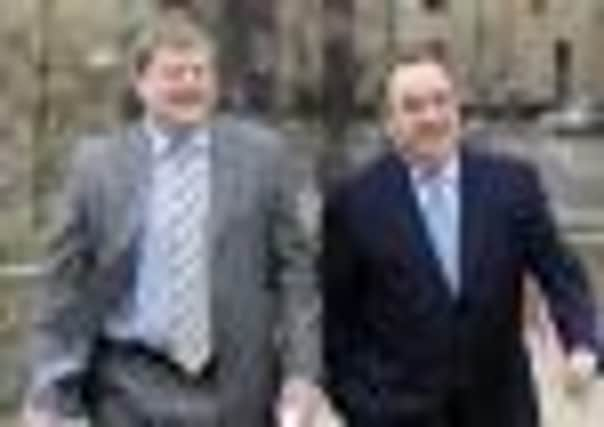Ruth Wishart: Beware of the sales pitch for independence


Instead, some 30 souls have fetched themselves up for something billed as the Independence Roadshow, a one-man touring performance from the SNP’s Angus Robertson, his party’s leader at Westminster. It’s a production that has been seen before, but only by the faithful.
But now, for the first time, the doors are open to all comers from all parties and none. Let me enter a plea to membership of that latter camp. Later investigations reveal that I am not alone, and that as well as political agnostics there are also folk aligned to the local Labour party. Just the same, I would guess that the majority of his audience were true believers from his own flock.
Advertisement
Hide AdAdvertisement
Hide AdHis sales pitch, backed up by the inevitable power point presentation (clearly my Scottish Campaign for The Abolition of Power Point Presentations has work still to do), is, in essence, that this is not an election campaign. It’s about how you view the future of Scotland. So he acknowledges that up and down the policy checklists people will vote “yes” (or “no”) alongside others whose views may coincide on very little else but the merits of independence.
The corollary of which is that Angus’ army is deemed to be foot soldiers of a variety of persuasions who nevertheless conclude that 2014 is of such seminal importance to their own and the national future that they will function as civilian advocates for the Yes cause, talking of their conviction to anyone who will listen, and possibly some who would prefer not to but will get their ear bashed anyway.
The formal opening shots in this campaign will be fired later this month, but already the phoney war is in full flight. On the other side of the debate come daily media fusillades from the naysayers, presumably on the grounds that a scare a day will keep the voters away from any nationalistic nonsense. These battalions tend to the Private Fraser mould: doomed, doomed, we’d all be doomed.
But there’s an interesting psychology in play here. Certainly there are reasons to be fearful about any ambition in any country where the stakes are high and the impact impossible to calibrate with accuracy.
But the Yes campaign has clearly concluded that positivity will always trump negativity as an attractive selling proposition. Obviously aware of the reputation garnered by the ‘cybernat’ fraternity, General Robertson sternly warns his audience to cease and desist from making any online points that are offensive or less than constructive.
The roadshow is predicated on a great deal of voter research, an area where the SNP is the envy of its opponents. However, their primary tool – Activate software – will apparently be available to all Yes campaigners once the starting gun has been fired. Not, unsurprisingly, the files from previous electoral endeavours, but the sampling done specifically to inform the referendum campaign. If Mrs McTumshie is inclined to a “yes” but fretting about Faslane, soothing statistics will be available to the relevant door chapper.
But in essence any Yes campaign hoping to woo the uncommitted, or even the slightly hostile, must be mindful of its tone and honest in its dealings. This isn’t an issue to be owned or wholly managed by any one party or even a multi-party coalition.
When the blessed Canon Kenyon Wright talked about the constitution belonging to the people in the heady days of the Claim of Right, he spoke a broader truth. In 1707, how Scotland was to be governed was decided by a small and highly unrepresentative minority.
Advertisement
Hide AdAdvertisement
Hide AdIn 2014 every possible voter has to understand and believe that this time round they are not voting for individual politicians or particular parties. They are voting for the kind of Scotland they want their children and grandchildren to live in. That has to be their personal vision, and conviction.
Over the next few weeks and months they will be fed all manner of “evidence” from all sides as to the impact of their vote. Some of this will be the kind of statistics that would give damned lies a good name. Some will be little more than slightly informed conjecture, because, in truth nobody is in a possession of an infallible crystal ball.
For me, the emphasis has to be on values: on what kind of Scotland we want to live in, and what kind we want to build. And, not at all, incidentally, what traditions we don’t want destroyed in the name of progress and modernity.
There are people who would vote “yes” if they thought half their income would be imperilled. There are people who would vote “no” if they were offered twice their income to say “yes”. Both of these camps are in a minority. In between lies the territory on which the campaigns will be conducted. The people who are yet to be persuaded, the people who need jolted from political apathy.
The chronologically gifted will remember the 40 per cent rule in 1978 when a clause was inserted to the legislation meaning an overall “yes” vote would be invalid if fewer than 40 per cent of those on the electoral roll turned out to vote. It may have been a shoddy device, but villainous status in this piece must also go to those who stayed at home. Whatever else happens between now and November 2014, I suspect the noise levels this time round will be more difficult to ignore.